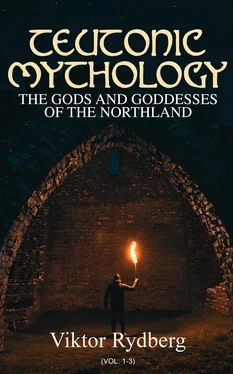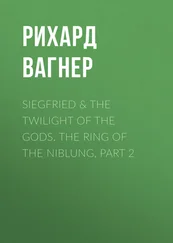The following year, 1868, a prominent German linguist—Mr. Benfey—came forward and definitely took Latham's side. He remarked at the outset that hitherto geological investigations had found the oldest traces of human existence in the soil of Europe, and that, so long as this is the case, there is no scientific fact which can admit the assumption that the present European stock has immigrated from Asia after the quaternary period. The mother-tongues of many of the dialects which from time immemorial have been spoken in Europe may just as well have originated on this continent as the mother-tongues of the Mongolian dialects now spoken in Eastern Asia have originated where the descendants now dwell. That the Aryan mother-tongue originated in Europe, not in Asia, Benfey found probably on the following grounds: In Asia, lions are found even at the present time as far to the north as ancient Assyria, and the tigers make depredations over the highlands of Western Iran, even to the coasts of the Caspian Sea. These great beasts of prey are known and named even among Asiatic people who dwell north of their habitats. If, therefore, the ancient Aryans had lived in a country visited by these animals, or if they had been their neighbours, they certainly would have had names for them; but we find that the Aryan Hindoos call the lion by a word not formed from an Aryan root, and that the Aryan Greeks borrowed the word lion ( lis , leon ) from a Semitic language. (There is, however, division of opinion on this point.) Moreover, the Aryan languages have borrowed the word camel, by which the chief beast of burden in Asia is called. The home of this animal is Baktria, or precisely that part of Central Asia in the vicinity of which an effort has been made to locate the cradle of the Aryan tongue. Benfey thinks the ancient Aryan country has been situated in Europe, north of the Black Sea, between the mouth of the Danube and the Caspian Sea.
Since the presentation of this argument, several defenders of the European hypothesis have come forward, among them Geiger, Cuno, Friedr. Müller, Spiegel, Pösche, and more recently Schrader and Penka. Schrader's work, Sprachvergleichung und Urgeschichte , contains an excellent general review of the history of the question, original contributions to its solution, and a critical but cautious opinion in regard to its present position. In France, too, the European hypothesis has found many adherents. Geiger found, indeed, that the cradle of the Aryan race was to be looked for much farther to the west than Benfey and others had supposed. His hypothesis, based on the evidence furnished by the geography of plants, places the ancient Aryan land in Germany. The cautious Schrader, who dislikes to deal with conjectures, regards the question as undecided, but he weighs the arguments presented by the various sides, and reaches the conclusion that those in favour of the European origin of the Aryans are the stronger, but that they are not conclusive. Schrader himself, through his linguistic and historical investigations, has been led to believe that the Aryans, while they still were one people, belonged to the stone age, and had not yet become acquainted with the use of metals.
5.
THE ARYAN LAND OF EUROPE.
Table of Contents
On one point—and that is for our purpose the most important one—the advocates of both hypotheses have approached each other. The leaders of the defenders of the Asiatic hypothesis have ceased to regard Asia as the cradle of all the dialects into which the ancient Aryan tongue has been divided. While they cling to the theory that the Aryan inhabitants of Europe have immigrated from Asia, they have well-nigh entirely ceased to claim that these peoples, already before their departure from their Eastern home, were so distinctly divided linguistically that it was necessary to imagine certain branches of the race speaking Celtic, others Teutonic, others, again, Greco-Italian, even before they came to Europe. The prevailing opinion among the advocates of the Asiatic hypothesis now doubtless is, that the Aryans who immigrated to Europe formed one homogeneous mass, which gradually on our continent divided itself definitely into Celts, Teutons, Slavs, and Greco-Italians. The adherents of both hypotheses have thus been able to agree that there has been a European-Aryan country . And the question as to where it was located is of the most vital importance, as it is closely connected with the question of the original home of the Teutons , since the ancestors of the Teutons must have inhabited this ancient European-Aryan country.
Philology has attempted to answer the former question by comparing all the words of all the Aryan-European languages. The attempt has many obstacles to overcome; for, as Schrader has remarked, the ancient words which to-day are common to all or several of these languages are presumably a mere remnant of the ancient European-Aryan vocabulary. Nevertheless, it is possible to arrive at important results in this manner, if we draw conclusions from the words that remain, but take care not to draw conclusions from what is wanting.
The view gained in this manner is, briefly stated, as follows:
The Aryan country of Europe has been situated in latitudes where snow and ice are common phenomena. The people who have emigrated thence to more southern climes have not forgotten either the one or the other name of those phenomena. To a comparatively northern latitude points also the circumstance that the ancient European Aryans recognised only three seasons—winter, spring, and summer. This division of the year continued among the Teutons even in the days of Tacitus. For autumn they had no name.
Many words for mountains, valley, streams, and brooks common to all the languages show that the European-Aryan land was not wanting in elevations, rocks, and flowing waters. Nor has it been a treeless plain. This is proven by many names of trees. The trees are fir, birch, willow, elm, elder, hazel, and a beech called bhaga , which means a tree with eatable fruit. From this word bhaga is derived the Greek phegos , the Latin fagus , the German Buche , and the Swedish bok . But it is a remarkable fact that the Greeks did not call the beech but the oak phegos , while the Romans called the beech fagus . From this we conclude that the European Aryans applied the word bhaga both to the beech and the oak, since both bear similar fruit; but in some parts of the country the name was particularly applied to the beech, in others to the oak. The beech is a species of tree which gradually approaches the north. On the European continent it is not found east of a line drawn from Königsberg across Poland and Podolia to Crimea. This leads to the conclusion that the Aryan country of Europe must to a great extent have been situated west of this line, and that the regions inhabited by the ancestors of the Romans, and north of them by the progenitors of the Teutons, must be looked for west of this botanical line, and between the Alps and the North Sea.
Linguistic comparisons also show that the Aryan territory of Europe was situated near an ocean or large body of water. Scandinavians, Germans, Celts, and Romans have preserved a common name for the ocean—the Old Norse mar , the Old High German mari , the Latin mare . The names of certain sea-animals are also common to various Aryan languages. The Swedish hummer (lobster) corresponds to the Greek kamaros , and the Swedish säl (seal) to the Greek selachos .
In the Aryan country of Europe there were domestic animals—cows, sheep, and goats. The horse was also known, but it is uncertain whether it was used for riding or driving, or simply valued on account of its flesh and milk. On the other hand, the ass was not known, its domain being particularly the plains of Central Asia.
Читать дальше











